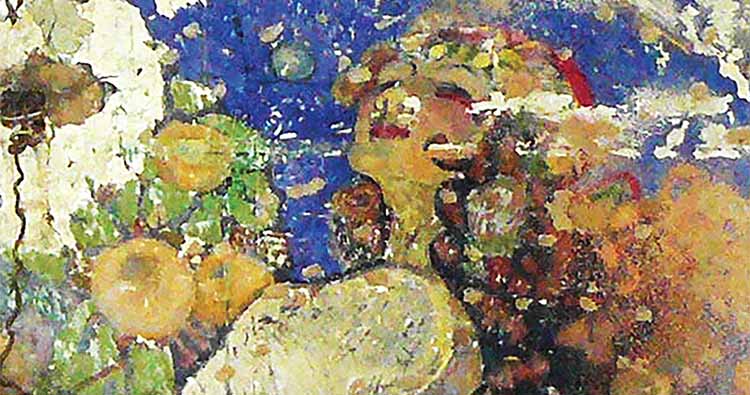Major selection of 1910-1932 Georgian avant-garde set for National Gallery display

The National Gallery exhibition organisers have incorporated methods used in original displays hosted in the Georgian capital in the early decades of the 20th century, to present their selection of hundreds of works. Photo via Georgian National Museum.
Hundreds of works by avant-garde artists, from one of the most exciting era of Tbilisi as a melting pot of creatives in the early decades of the 20th century, will go on show at the capital city's National Gallery starting this Friday, showcasing the likes of Kirill Zdanevich, Elene Akhvlediani, David Kakabadze and Petre Otskheli.
Entitled 'Georgian Modernism & the Tbilisi Avant-garde 1910-1932', the display will bring over 400 works by 28 artists from the years when pioneering ideas and creative freedom produced some of the most celebrated tendencies and artwork under three different political orders and cultural realities in the country.
Curators of the show said works familiar to viewers as well as new exhibits and those not before placed in a "common modernist context" in exhibitions would be seen by those flocking to the downtown gallery, adding the team that worked on the display aimed to show "multidimensional and diverse" nature of the central theme.
The organisers have also had to adapt their approach to preparing the exposition, with the team explaining one of the rooms of the gallery had to be kept with its original display of paintings by Niko Pirosmanashvili, a self-taught primitivist artist from the early 20th century, which altered the use of the space for the avant-garde show.
We have utilised the principle of an asymmetric exposition for this display and, most importantly, incorporated the method of organising shows used by [painter] Dimitri Shevardnadze in 1919 and 1920
- Exhibition organisers
The final form of the use of the space will be a "certain intervention" in the Pirosmani exhibition space, the curators explained, to introduce into it works by the artists who discovered and raised awareness on the painter who struggled in obscurity due to material struggles for most of his life.
With the overall display, the organisers sought to represent the spirit of pioneering ideas and melting-pot artistic gatherings in the Georgian capital in the 1910s, where cafes hosted loud exchanges of thoughts on new creative trends. The venues opened their spaces to individuals practising artistic schools from Dadaism to futurism, with concerts and literary readings bringing creatives and enthusiasts together.
The buoyant decade was interrupted by the 1921 Red Army invasion and subsequent Sovietisation of the country, however experimental and pioneering artistic practices continued well into the 1920s, and in some forms into the following decade.
The National Gallery exhibition will host the first display of works of scenographer Valerian Sidamon-Eristavi, sourced from a collection obtained by the culture ministry last year. Other exhibits will come from fonds of Elene Akhvlediani Museum, Art Palace museum venue, National Parliamentary Library and the Museum of Shota Rustaveli National Theatre.
Curated by Nana Kipiani and Nana Shervashidze with co-curator Mariam Dvali, it will also showcase the likes of Zygmunt Waliszewski, Ketevan Maghalashvili, Dimitri Shevardnadze and Shalva Kikodze for highlighting the theme of the display.
The display is set to run at the venue, located at 11 Shota Rustaveli Avenue, through April 20.
 Tweet
Tweet  Share
Share